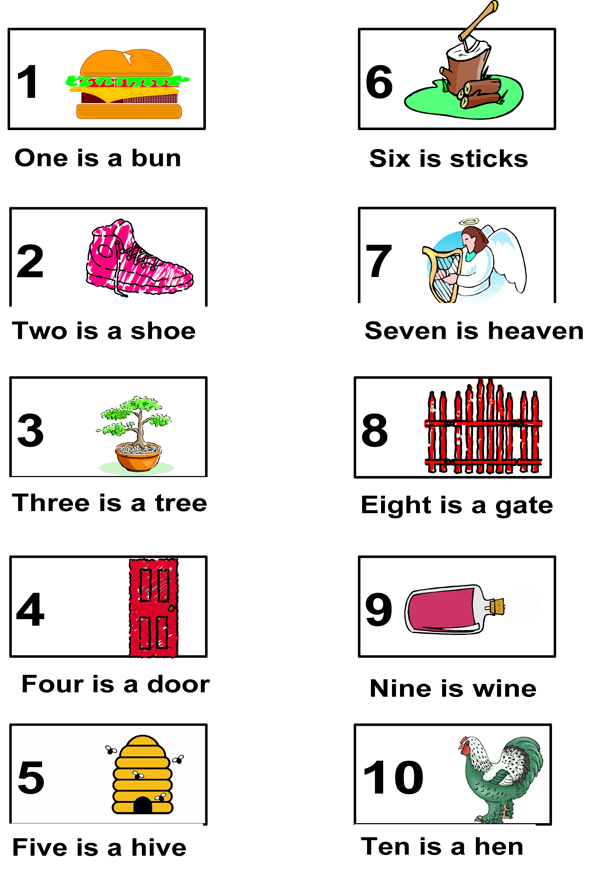If you have a numbered list to memorize, the best mnemonic strategy is the pegword mnemonic. This mnemonic uses numbers which have been transformed into visual images. Here's the standard 1-10 set.

I add two more:

If you have a numbered list to memorize, the best mnemonic strategy is the pegword mnemonic. This mnemonic uses numbers which have been transformed into visual images. Here's the standard 1-10 set.

I add two more:

In a recent news report, I talked about how walking through doorways creates event boundaries, requiring us to update our awareness of current events and making information about the previous location less available. I commented that we should be aware of the consequences of event boundaries for our memory, and how these contextual factors are important elements of our filing system. I want to talk a bit more about that.
Alzheimer's disease currently affects one in 10 people over age 65 and nearly half of those over age 85.
More than 19 million Americans say they have a family member with the disease, and 37 million say they know somebody affected with Alzheimer's.
In the United States, the average lifetime cost per Alzheimer patient is US$174,000. (These figures are from the U.S. Alzheimer's Association).
In the following case study, I explore in depth the issue of learning the geological time scale — names, dates, and defining events. The emphasis is on developing mnemonics, of course, but an important part of the discussion concerns when and when not to use mnemonics, and how to decide.
Phanerozoic Eon 542 mya—present
Cenozoic Era 65 mya—present
Difficulty in remembering people’s names is one of the most common memory tasks that people wish to be better at. And the reason for this is not that their memory is poor, but because it is so embarrassing when their memory lets them down.
This isn’t just an issue at a personal level. It’s a particular issue for anyone who has to deal with a lot of people, many of whom they will see at infrequent intervals. Nothing makes a person — a client, a customer, a student — feel more valued than being remembered.
A new book, Moonwalking with Einstein: The Art and Science of Remembering Everything, has been creating some buzz recently.
At the same time as a group of French parents and teachers have called for a two-week boycott of homework (despite the fact that homework is officially banned in French primary schools), and just after the British government scrapped homework guidelines, a large long-running British study came out in support of homework.
A number of countries have national curricula: France, Hungary, Ireland, Italy, Japan, Korea, the Netherlands, New Zealand, Norway, Portugal, Singapore, Spain, the United Kingdom. Most States in the U.S. follow common guidelines for a core curriculum, although there is no national curriculum as such.